DXY is off and running again:
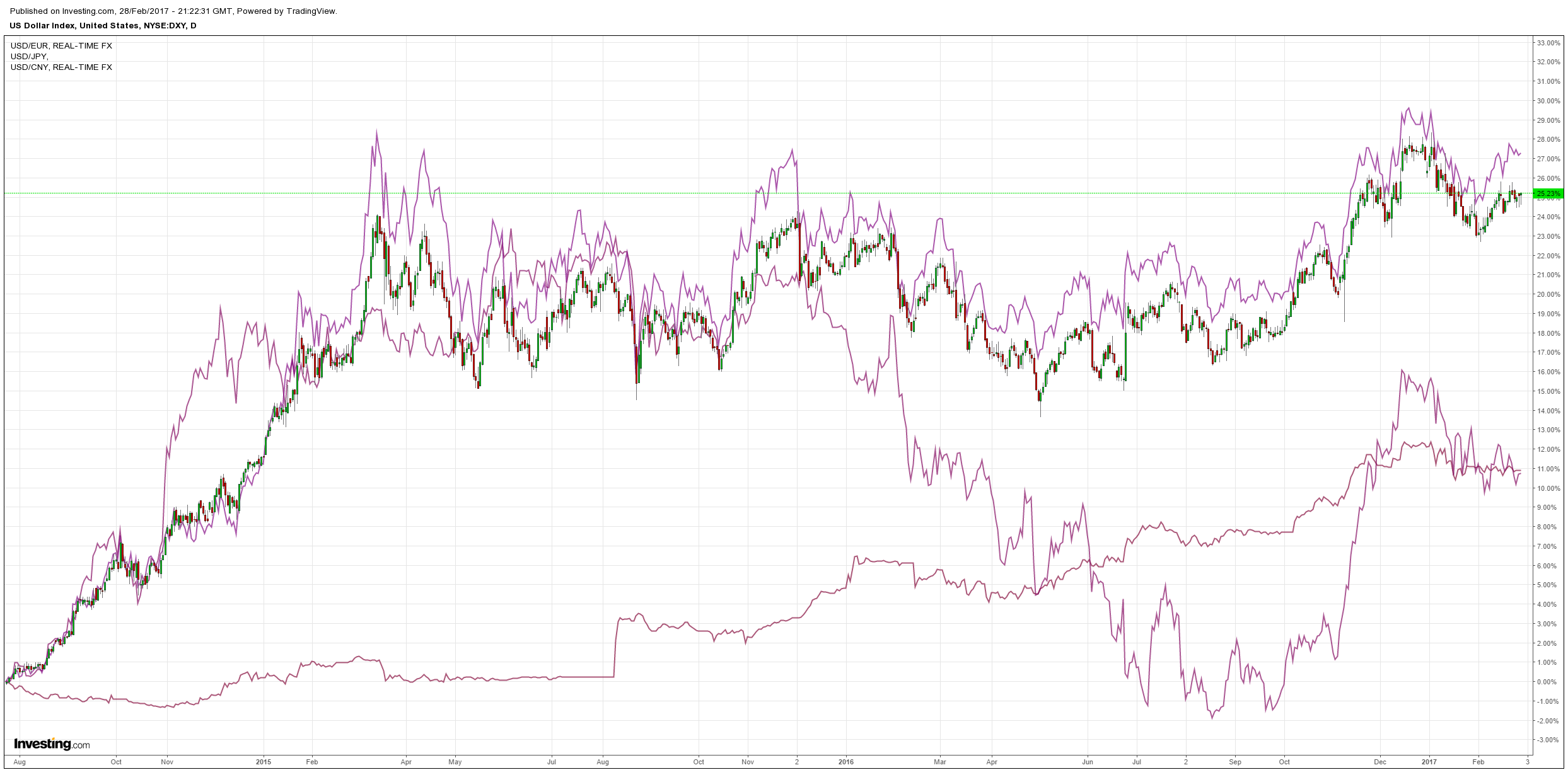
Commodity currencies got slammed, Aussie the least:
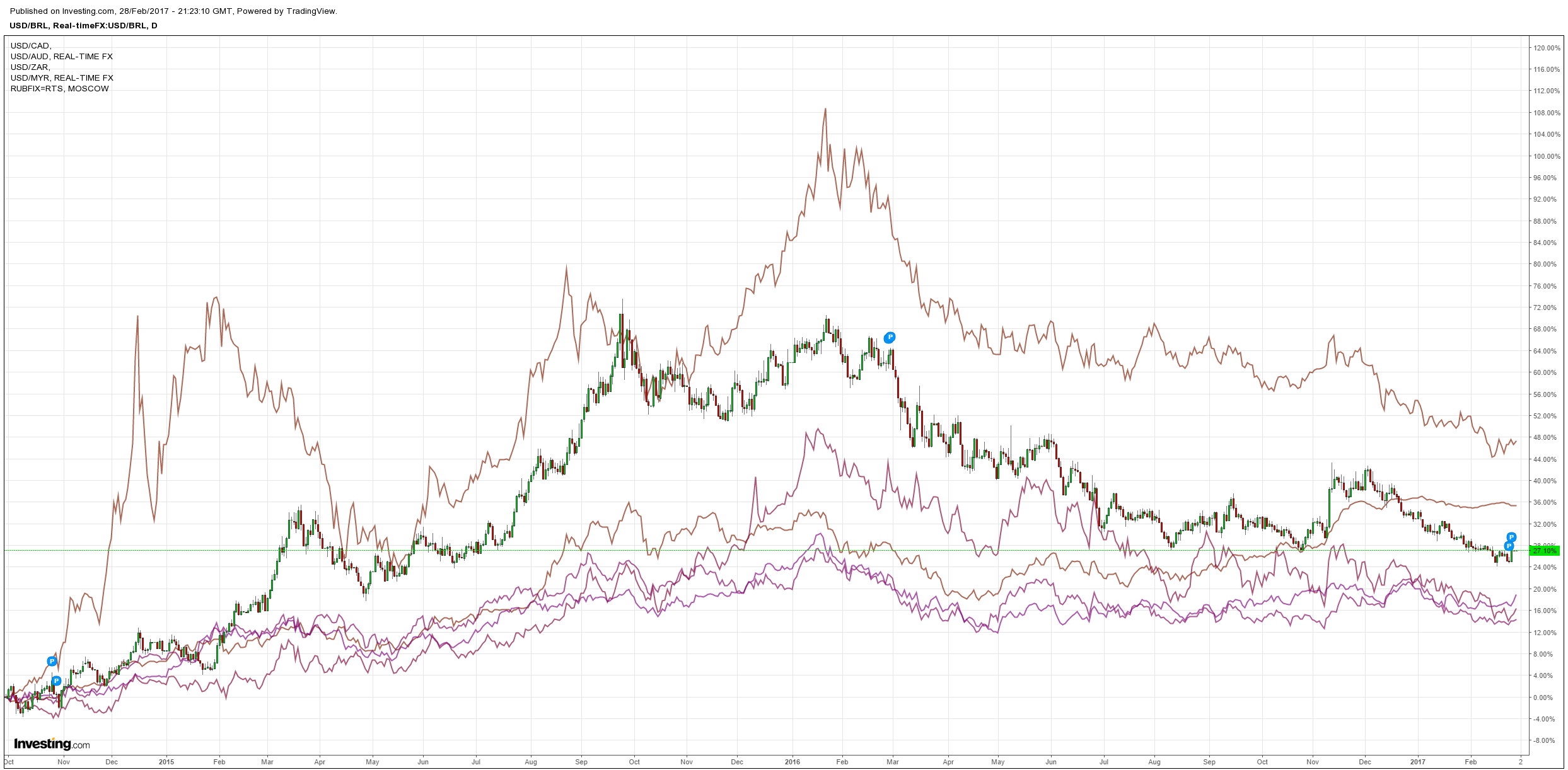
Gold was hit:
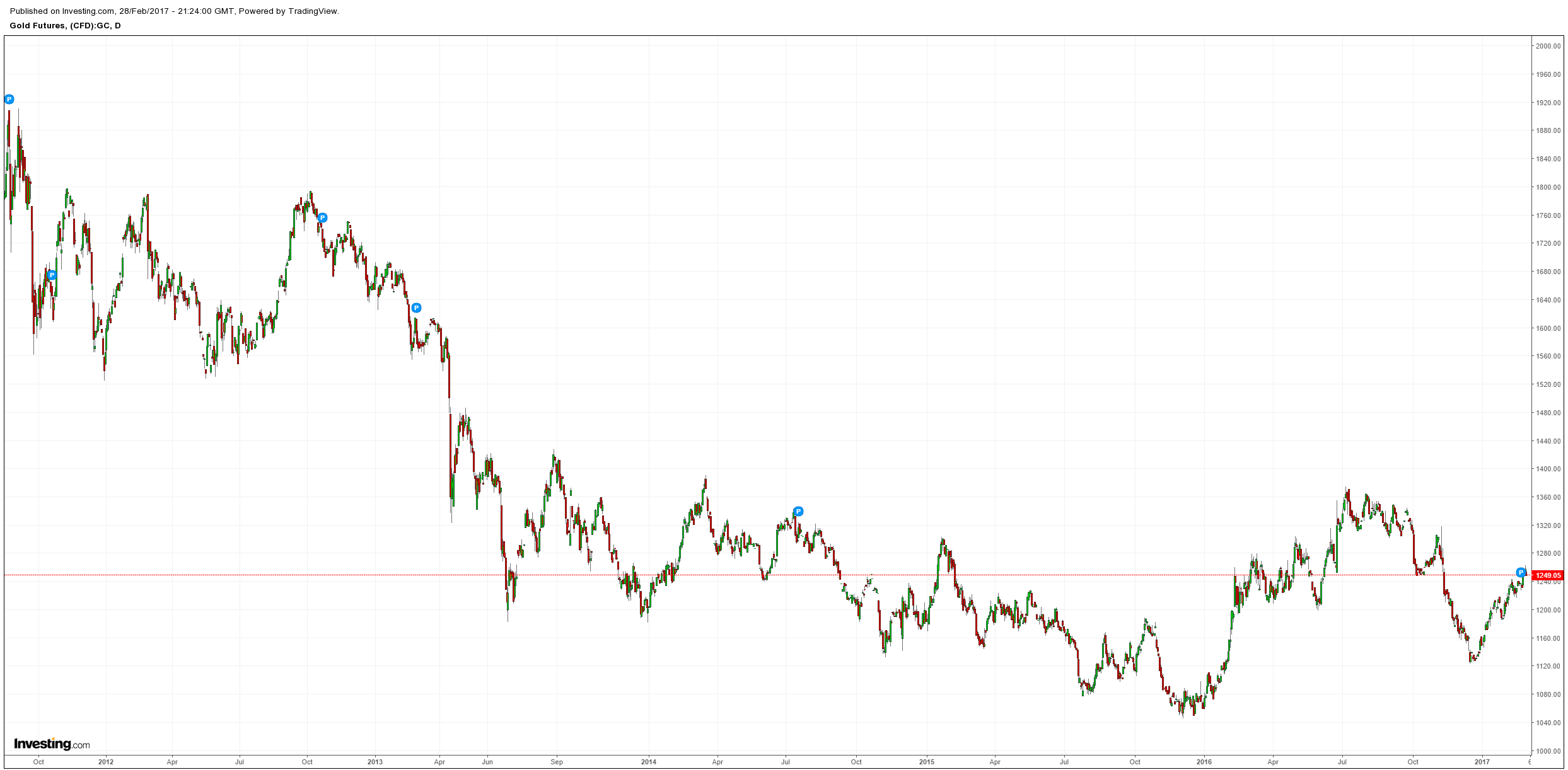
Brent is stuck:

Base metals were mixed:
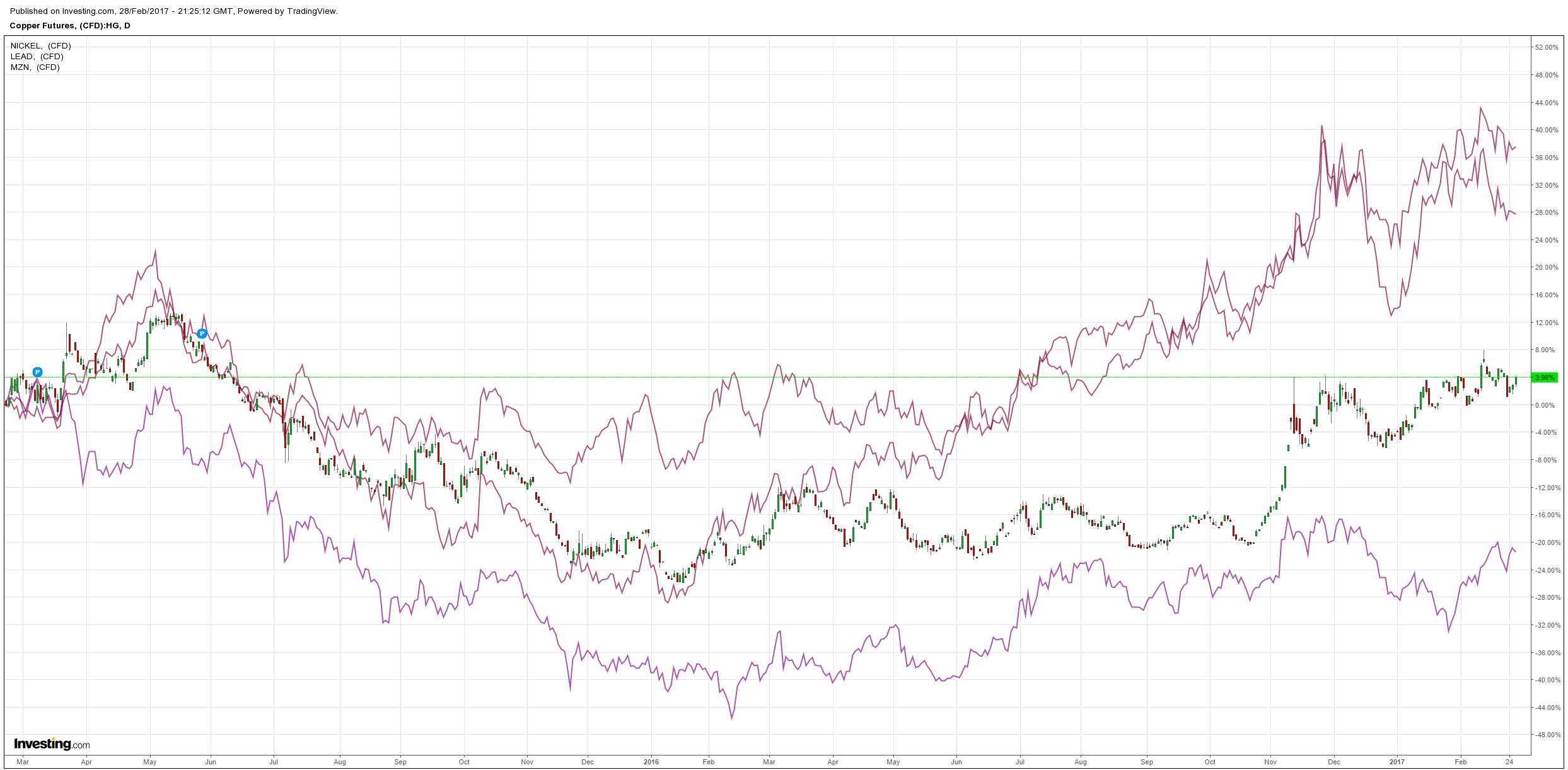
Big miners were hit again:
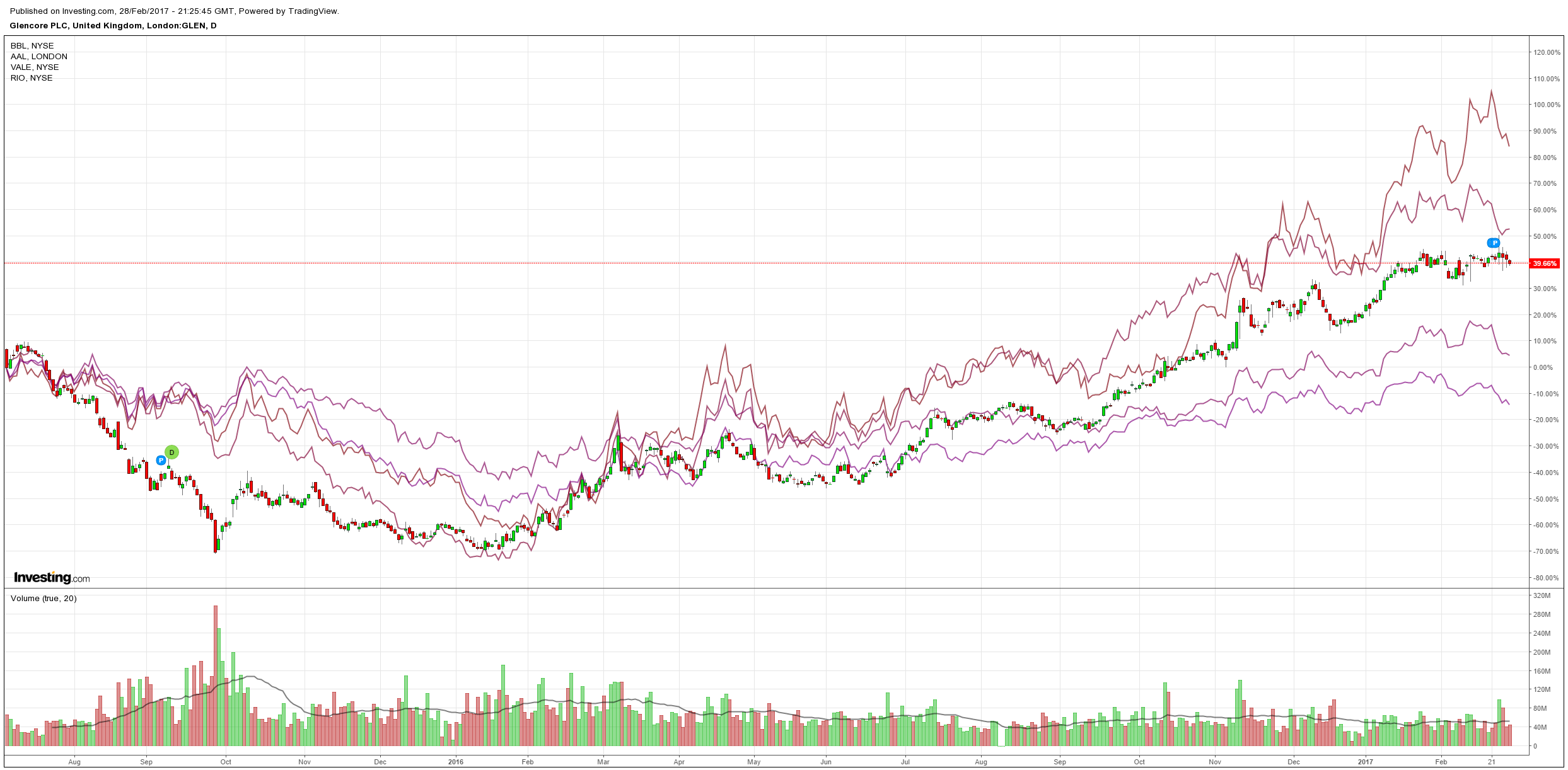
EM stocks got smashed:
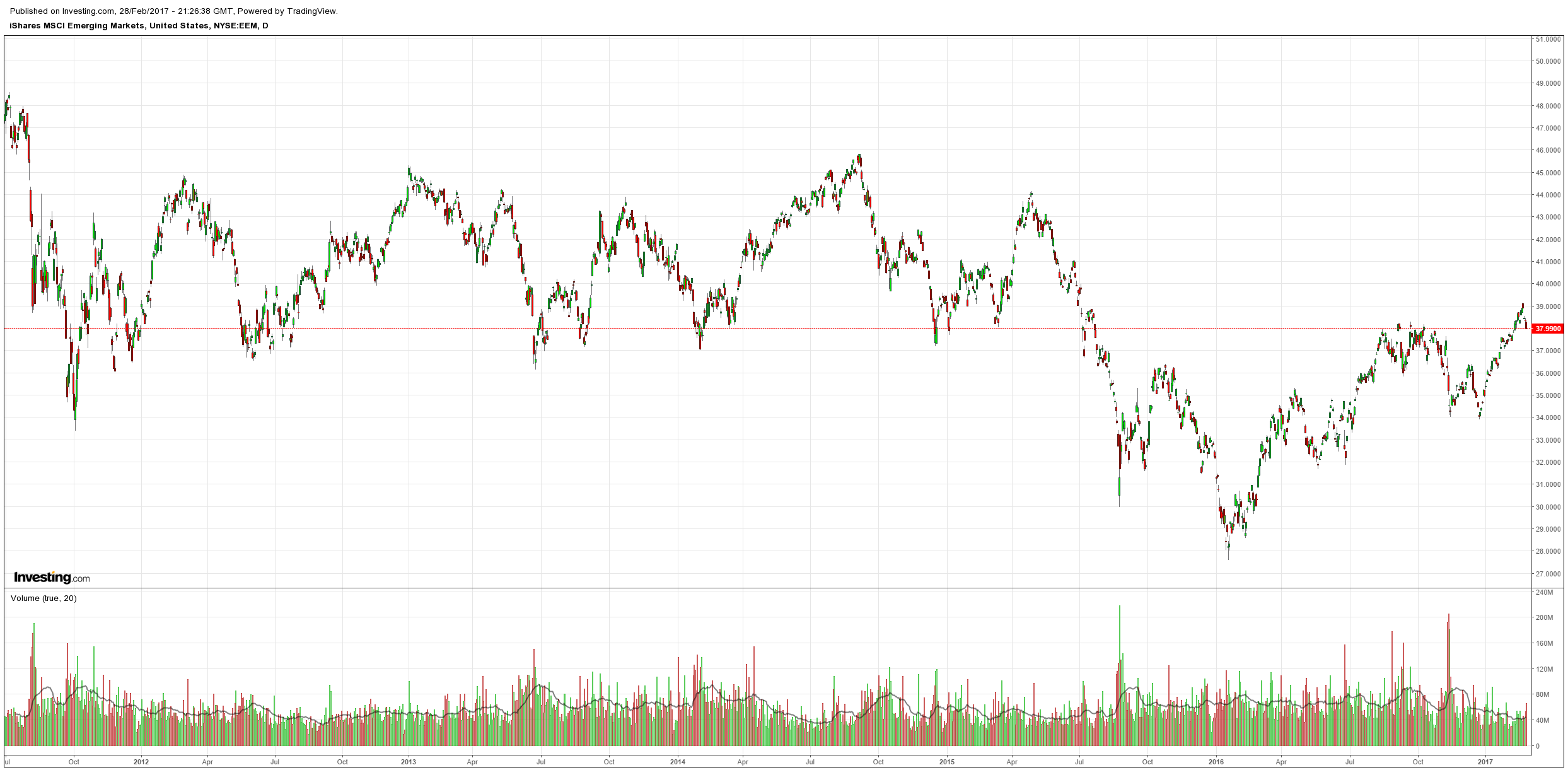
But high yield held up:
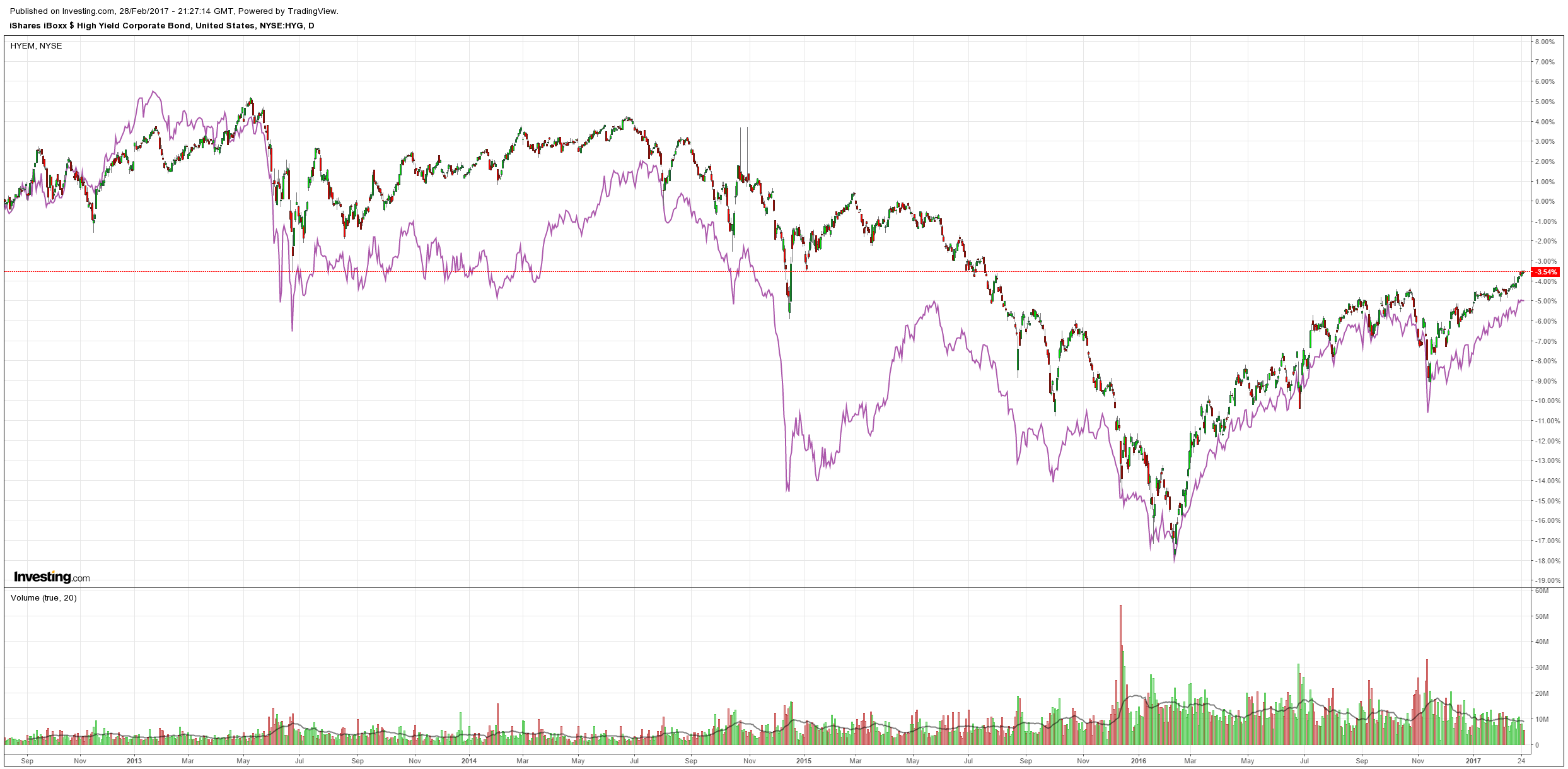
US bonds were flogged:
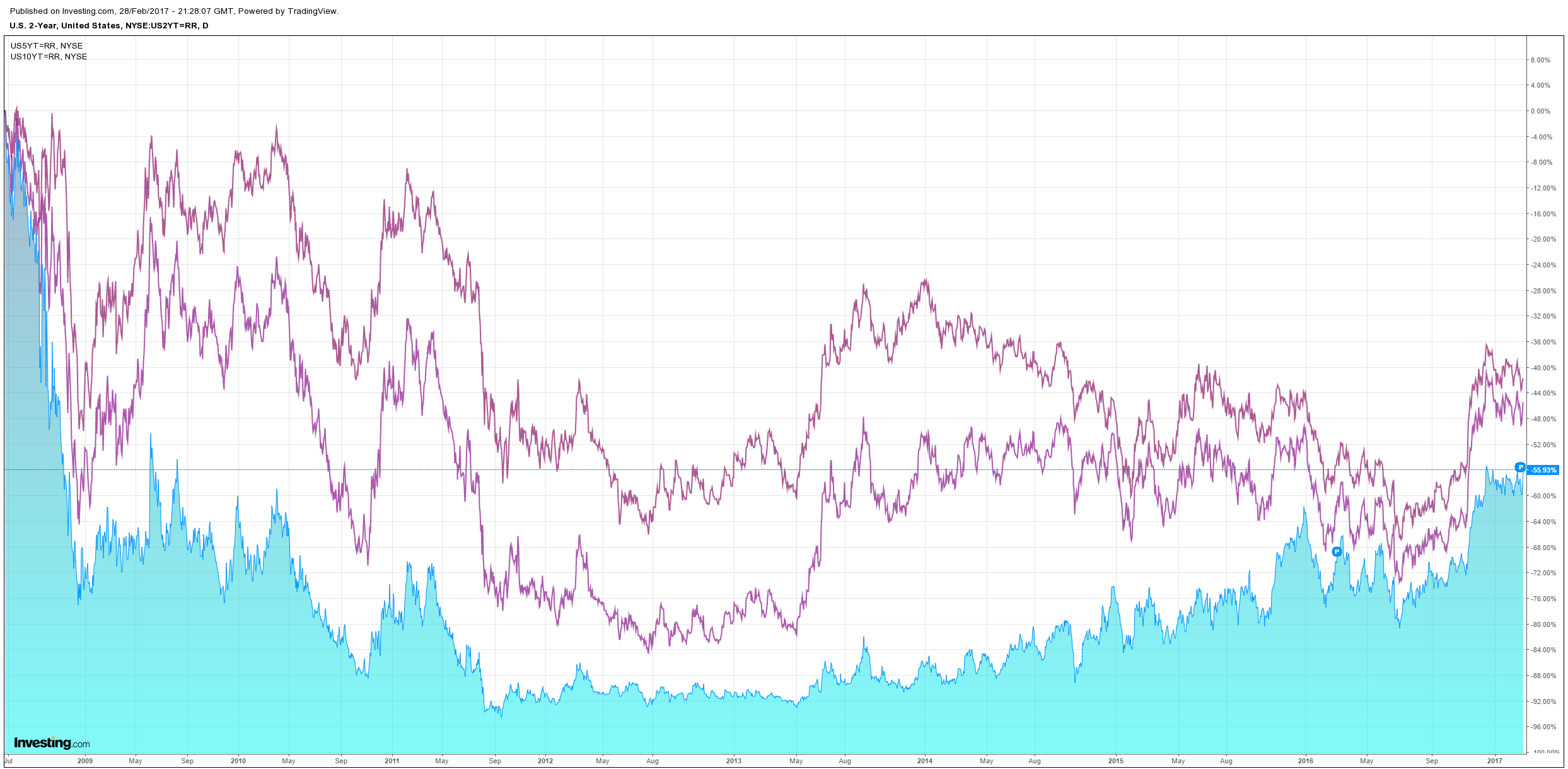
European spreads have tightened as Macron gains:
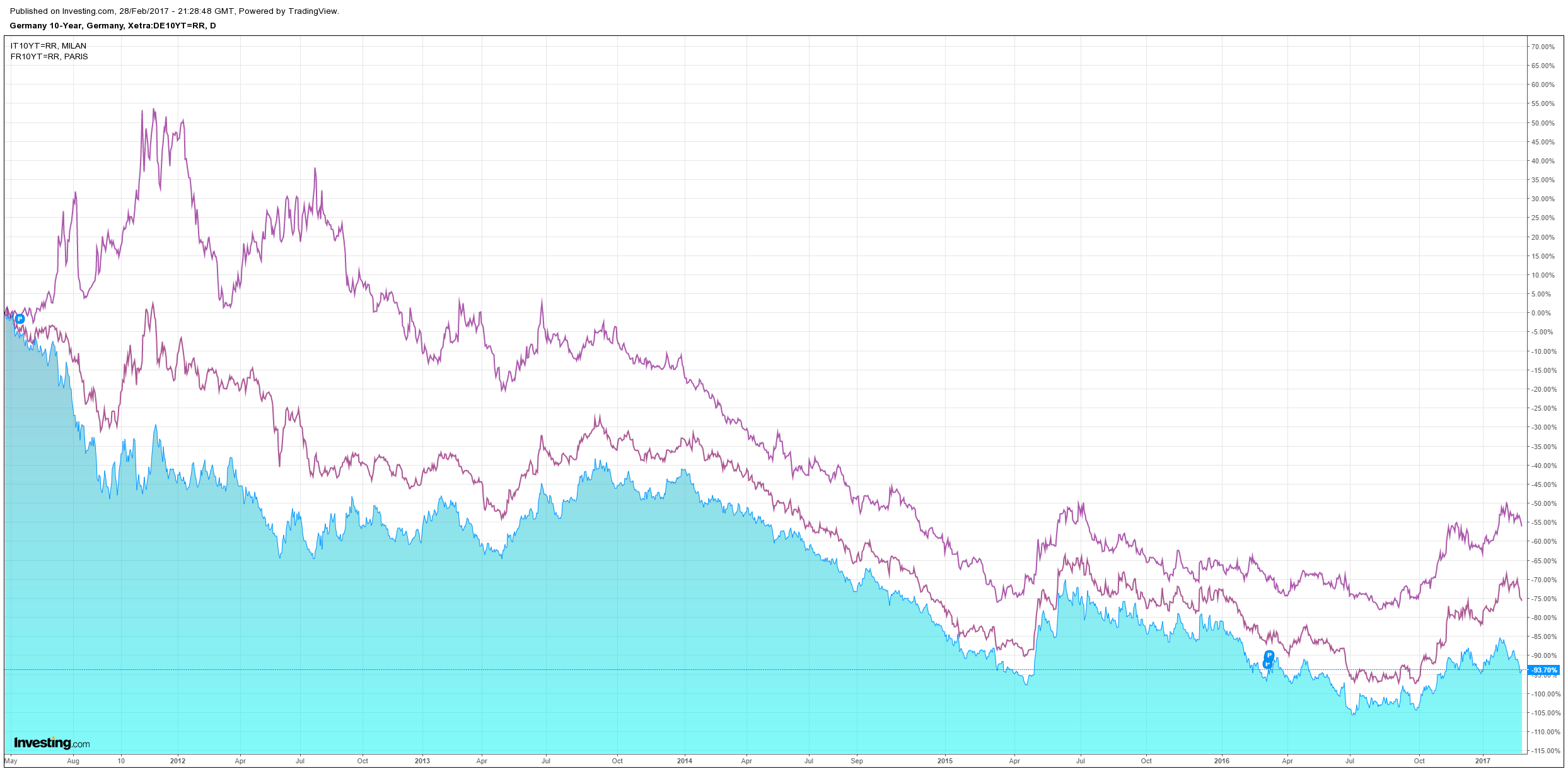
And US stocks finally fell if only a little:
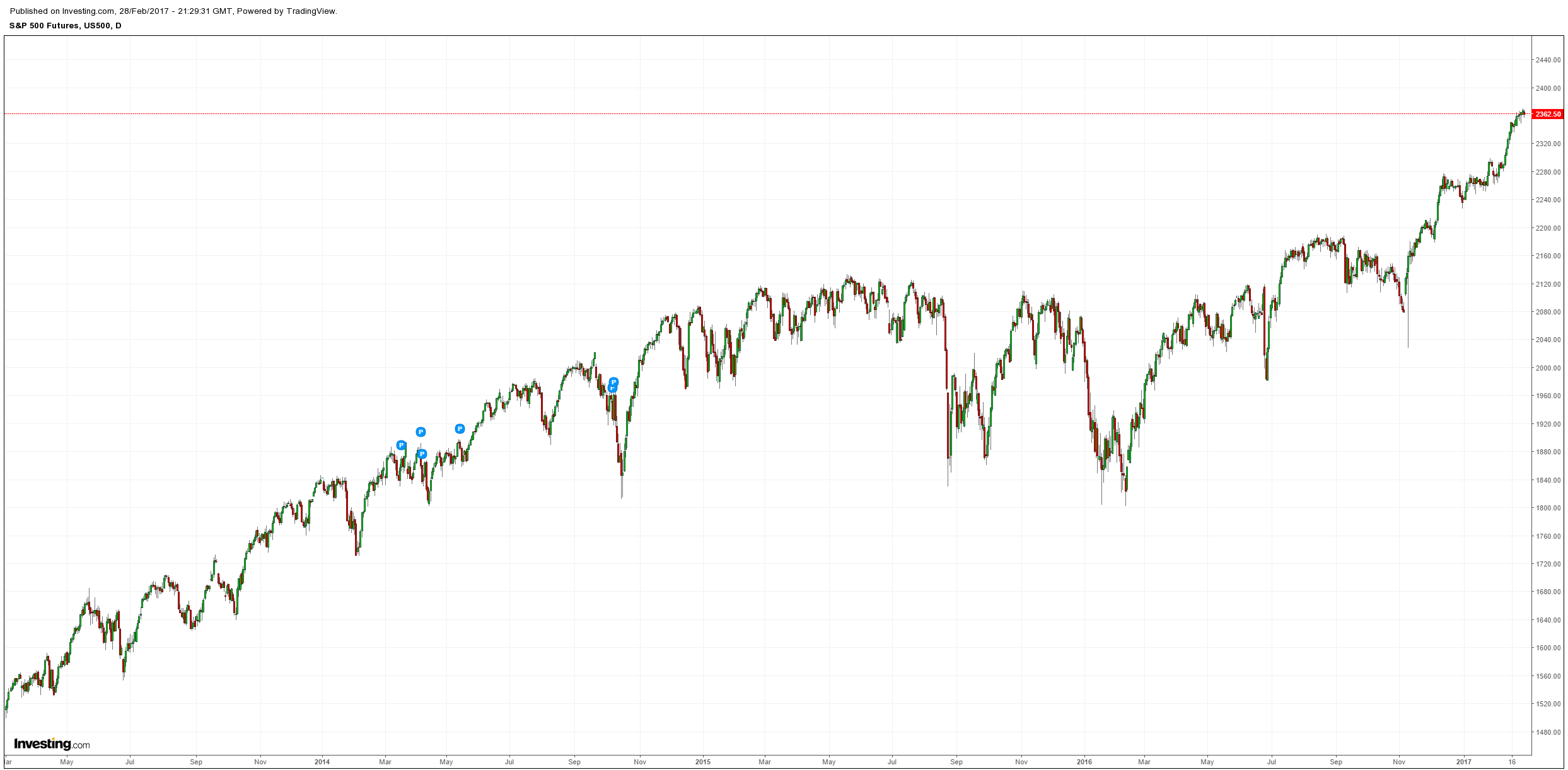
The news on the US economy was solid (charts from CR). GDP was unchanged for Q4:
Real gross domestic product (GDP) increased at an annual rate of 1.9 percent in the fourth quarter of 2016, according to the “second” estimate released by the Bureau of Economic Analysis. In the third quarter, real GDP increased 3.5 percent.
The GDP estimate released today is based on more complete source data than were available for the “advance” estimate issued last month. In the advance estimate, the increase in real GDP was also 1.9 percent. With the second estimate for the fourth quarter, the general picture of economic growth remains the same; the increase in personal consumption expenditures was larger and increases in state and local government spending and in nonresidential fixed investment were smaller than previously estimated …
Good revisions to consumption which were reinforced by new highs in consumer confidence:
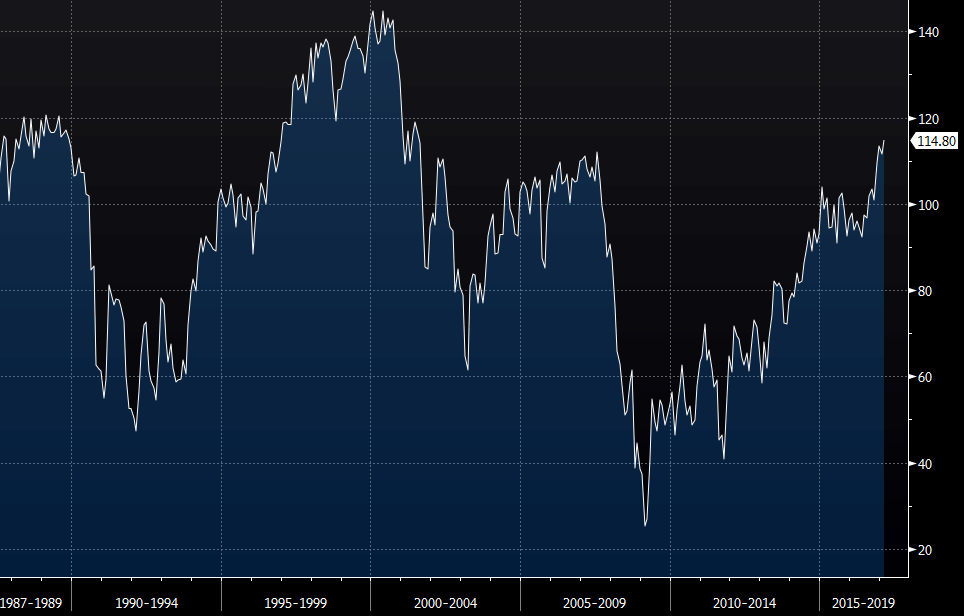
House prices are ploughing on:
The S&P CoreLogic Case-Shiller U.S. National Home Price NSA Index, covering all nine U.S. census divisions, reported a 5.8% annual gain in December, up from 5.6% last month and setting a 30-month high. The 10-City Composite posted a 4.9% annual increase, up from 4.4% the previous month. The 20-City Composite reported a year-over-year gain of 5.6%, up from 5.2% in November.
Seattle, Portland, and Denver reported the highest year-over-year gains among the 20 cities over the 11 months leading up to December. Seattle led the way with a 10.8% year-over-year price increase in December, followed by Portland with 10.0%, and Denver with an 8.9% increase. Twelve cities reported greater price increases in the year ending December 2016 versus the year ending November 2016.
Before seasonal adjustment, the National Index posted a month-over-month gain of 0.2% in December. Both the 10-City Composite and the 20-City Composite indices posted 0.3% increases. After seasonal adjustment, the National Index recorded a 0.7% month-over-month increase, while the 10-City and 20-City Composites each reported 0.9% month-over-month increases. Eighteen of 20 cities reported increases in December before seasonal adjustment; after seasonal adjustment, all 20 cities saw prices rise.
And manufacturing is tearing it up as shale rebounds:
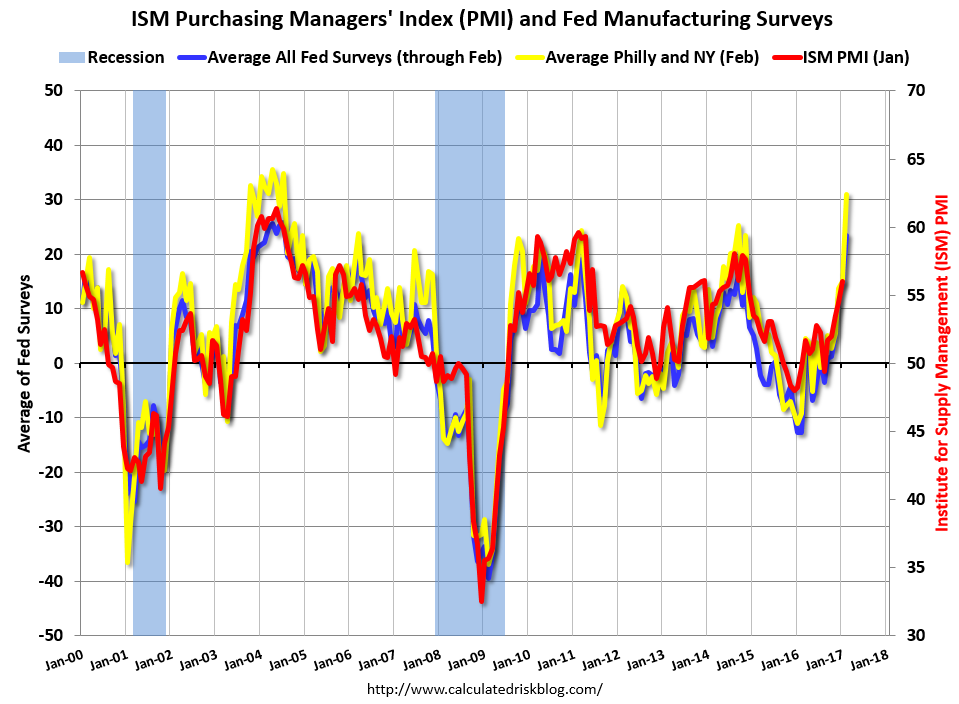
Then the Fed piled in as Fed presidents’s Kaplan, Dudley, Harker and Williams all sounded hawkish with March rate hike odds charging to 70%:
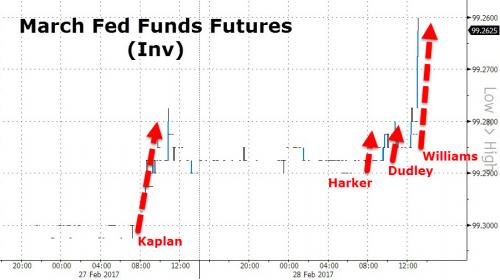
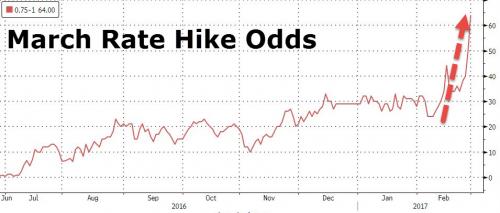
Allocations unchanged:
- buy the dips in the S&P500 and USD;
- sell commodity rallies and the AUD;
- buy dips in short end Aussie bonds;
- buy dips in gold miners for portfolio insurance;
- sell property!


